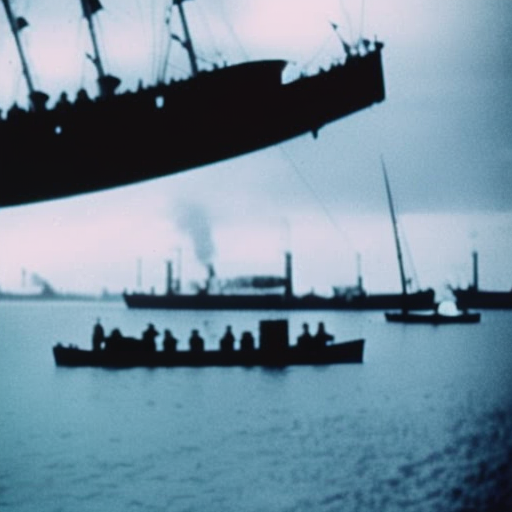Sinking of the Titanic (1912)
The sinking of the Titanic in 1912 was one of the most infamous maritime disasters in history. The RMS Titanic, a luxury British passenger liner, struck an iceberg on its maiden voyage from Southampton, England to New York City, resulting in the deaths of over 1,500 people.
Background:
The Titanic was built by the White Star Line and was the largest and most luxurious ship of its time. It was designed to be unsinkable, with advanced safety features such as watertight compartments and a double hull. On April 10, 1912, the ship set sail with approximately 2,224 passengers and crew members on board.
The Collision:
On the night of April 14, 1912, the Titanic received several warnings of icebergs in its path. However, the ship was traveling at a high speed and the crew failed to take adequate precautions. At around 11:40 PM, the Titanic struck an iceberg on its starboard side, causing severe damage to the hull.
Evacuation and Rescue:
As the ship began to sink, the crew initiated evacuation procedures. However, there were not enough lifeboats for all the passengers and crew. The women and children were given priority, while many men were left on board. The lifeboats that were launched were not filled to their full capacity, further exacerbating the loss of life.
Sinking of the Titanic:
As the Titanic continued to take on water, it became clear that the ship was going to sink. At 2:20 AM on April 15, 1912, the ship broke apart and sank into the icy waters of the North Atlantic Ocean. The lack of lifeboats and the freezing temperatures of the water led to the deaths of the majority of those on board.
Aftermath and Investigations:
News of the Titanic’s sinking shocked the world and led to widespread grief and outrage. The disaster prompted changes in maritime regulations, including the requirement for ships to carry enough lifeboats for all passengers and crew. Several investigations were conducted to determine the causes of the sinking, with the focus primarily on the inadequate number of lifeboats and the failure to heed iceberg warnings.
Legacy:
The sinking of the Titanic has had a lasting impact on popular culture. Numerous books, films, and documentaries have been made about the disaster, further immortalizing the tragedy. The sinking also served as a stark reminder of the dangers of hubris and the need for improved safety measures in the maritime industry.
In conclusion, the sinking of the Titanic in 1912 was a tragic event that resulted in the loss of over 1,500 lives. The collision with an iceberg, the inadequate number of lifeboats, and the failure to heed warnings all contributed to the disaster. The sinking of the Titanic led to significant changes in maritime regulations and continues to be remembered as one of the deadliest maritime disasters in history.












